Keeping Faith: How Citizens Are Shaping the Future of Our Religious Heritage
The Netherlands and Flanders are home to thousands of religious buildings that have been left empty due to society’s growing secularisation. While some are threatened with demolition, others await repurposing. The best way to ensure these buildings have a meaningful and sustainable future is by reconnecting them with the needs of today’s communities.
As you cycle, walk, or hike through the flat landscapes of Flanders or the Netherlands, church towers are visible in every direction, blending into the fabric of daily life. These buildings, with their unique architecture and locations, shape the identity of towns and cities. But they are more than just landmarks: they are deeply intertwined with local communities, carrying with them centuries of history that are both visible and tangible.
The people who built these churches were united by faith and optimism, working together to create structures that once served as the heart of society. They were built to last forever. Yet, in today’s world, “forever” seems out of reach. As religious practices have declined, particularly in Flanders and the Netherlands, many churches now sit unused, their futures uncertain. While much of this heritage is at risk of vacancy or demolition, searching for new purposes often provides hope.
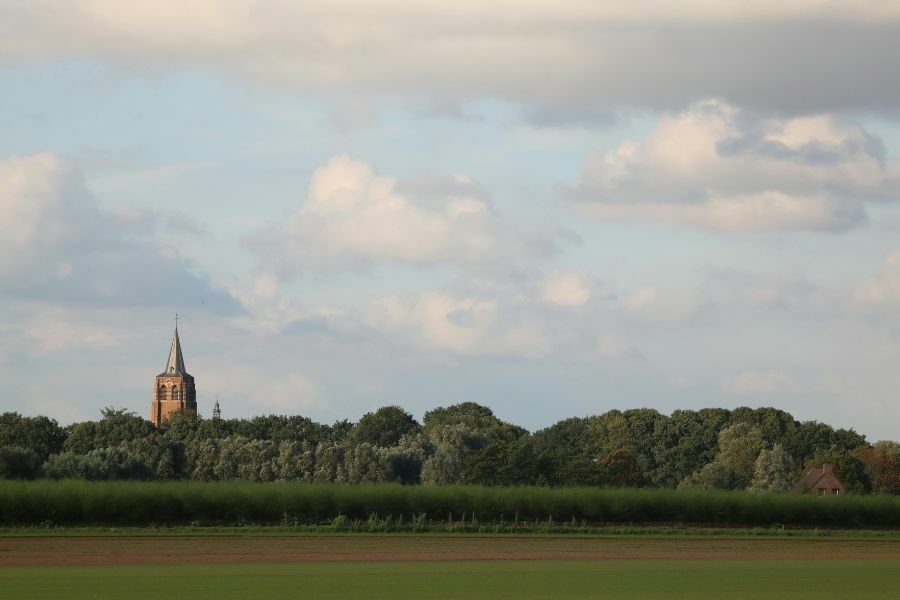 Village church in the Dutch countryside
Village church in the Dutch countryside© Matijn Palings / Unsplash
The Netherlands leads the charge
The Netherlands and Belgium face the challenge of what to do with de-consecrated or ‘released’ religious buildings, but their approaches differ in notable ways.
First, Belgium is predominantly Catholic, whereas the Netherlands has many denominations, each with different procedures and guidelines for ‘closing’ churches. Second, for Catholics, a church building is considered a sacred, holy space, to which both Dutch law and canon law apply. This is different for Protestant churches. Protestants do not consider the building itself to be sacred. Repurposing and secondary use are somewhat easier to realise in this case. As a result, the Netherlands has become a European leader in repurposing church buildings.
The number of practising religious adherents in the Netherlands has steadily declined since the 1960s. In 2008, during the National Year of Religious Heritage, an alarm was raised about the future of these buildings, setting the stage for more awareness and action. However, it wasn’t until 2018 that the Dutch government took concrete steps to address the future of religious heritage through a cooperative program known as the National Church Approach.
Churches were built to last forever. Yet, in today’s world, "forever" seems out of reach
This initiative brought together provincial and municipal authorities, church owners, and heritage organizations to develop sustainable plans for these monumental buildings. Municipalities, increasingly faced with vacant churches and development offers, lacked the statistics and knowledge to make informed decisions. By 2018, most municipal governments had lost regular contact with church owners.
The National Church Approach sought to address this by gathering data and fostering dialogue between municipalities, church owners, and citizens. Financial support was offered to municipalities that began inventorying all houses of worship—both monumental and non-monumental, regardless of denomination—to explore future possibilities.
Of the 342 municipalities in the Netherlands, a total of 240 have, so far, applied for funds and have started working on projects. In concrete terms, this means that 68 percent of the municipalities and 75 percent of all places of worship have been included in the inventory. This has both provided some statistical information and has renewed relationships between municipal authorities and owners. However, gathering data is only the beginning—what truly matters are the concrete actions that follow.
Successful repurposing actions
A shining example of successful repurposing is the Buurtbakens project in Haarlem, which connects churches with social organizations, hoping to make some good matches, for example by combining considerations of care, welfare and culture, to arrive at “a church being a house of the neighbourhood”. “The buildings are too often empty during the week while they could be valuable in all kinds of ways, for different activities and organisations,” says Hans Luttik of Geloven in de Stad (Belief in the City), a church network.
In Alkmaar, the Kerken Platform Alkmaar website was launched to allow local citizens and organizations to discuss the future of churches and propose ideas. Other municipalities have begun appointing permanent contacts for church owners to assist with sustainability, subsidies, and repurposing efforts.
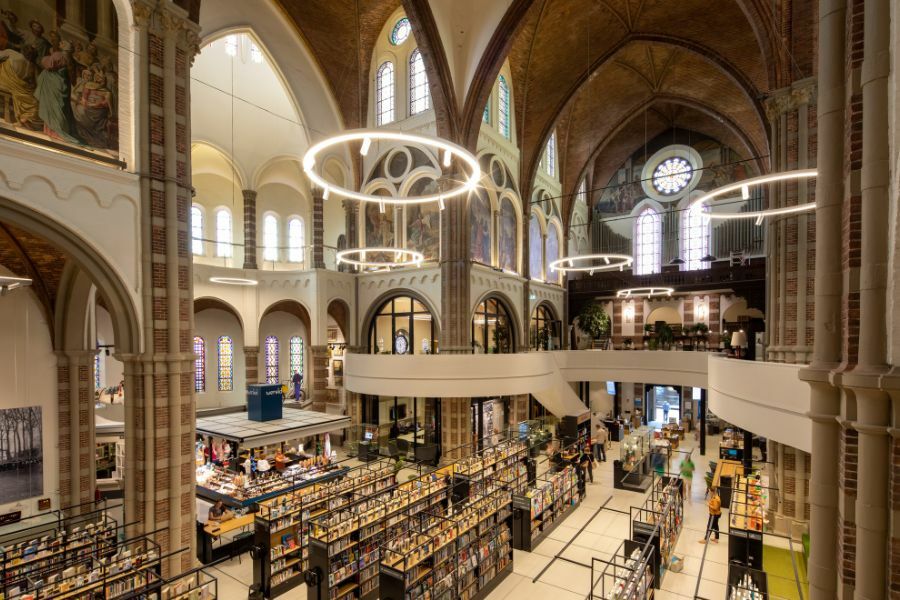 The St Peter's Church is now the meeting place of Vught, housing the library, a museum, classrooms and meeting rooms, a World Shop and, adjacent to the building, three commercial spaces and a catering point.
The St Peter's Church is now the meeting place of Vught, housing the library, a museum, classrooms and meeting rooms, a World Shop and, adjacent to the building, three commercial spaces and a catering point.© Heemschut/Henk Snaterse
Currently, three-quarters of all church buildings in the Netherlands are still in religious use, with over 1,500 repurposing projects already completed and several hundred more in transition. However, it is expected that at least 1,000 additional buildings will no longer be needed for their original purpose within the next five years.
Forty percent of the places of worship are considered national or municipal monuments. This means that they are protected by law and any proposed changes to them are subject to conditions. But sixty percent of the more modern churches, approximately 1,500 of which were built after 1965, have no legal protection status. Sometimes such a building is designated as ‘valuable’, but experience has shown that these buildings are the first to disappear or be abandoned. In principle, the Netherlands does not have a designation policy for disappearance or abandonment and many people request attention for these often (particularly architecturally) valuable buildings. Local people often become aware of the problem very late in the process, sometimes only after the demolition application has already been submitted. They then do everything they can to enforce preservation or actively suggest possibilities to make preservation possible.
Local people often become aware of the problem very late in the process, sometimes only after the demolition application has already been submitted
A strong example of community-driven repurposing can be found in Bredevoort, Gelderland, where locals transformed De Koppelkerk, built in 1947, into a vibrant multi-functional space for art and culture. Along with the repurposing, Bredevoort began a new initiative that contributes to the plans to pull the town out of the downward spiral of vacancy, aging and loss of retail. The organisation of this initiative is in the hands of a close-knit group of people: a “family” of seventy volunteers.
The repurposing of the R.K. St Peter’s Church in Vught, Brabant, has also been particularly successful. This church was withdrawn from worship in 2005 due to the poor structural condition of the building. The Foundation for the Preservation of the St Peter’s Church was established and two million euro in subsidies were acquired. Plans were made, but they ran into financial difficulty. In 2011, no solution had yet been found and demolition of the architecturally striking building became a possibility. However, a vacant lot or an apartment building with shops underneath was the last thing Vught wanted, so the community joined forces.
 Hall in the St Peter's Church in Vught
Hall in the St Peter's Church in Vught© Heemschut/Henk Snaterse
Seven Vught entrepreneurs adopted the project and, in cooperation with the intended users, the facility was re-designed as a meeting centre. As an ‘intended user’ the municipality made a substantial contribution to the repurposing, as did the Vught Museum. Citizens could contribute as ‘St. Peter visitors’ and the campaign Allemaal Lokaal (All Local) was set up. The entrepreneurs were prepared to cover the remaining financial risks. The St Peter’s Church is now the meeting place of Vught, housing the library, a museum, classrooms and meeting rooms, a World Shop and, adjacent to the building, three commercial spaces and a catering point. In addition to being well-used by the residents of Vught, the building also attracts many visitors. The established associations and partners have all experienced more interest in their activities. Vught residents even proudly give guided tours there!
Responding to social needs
In Flanders, too, people have been thinking about religious heritage for quite some time. As early as 1997, the Flemish Contact Committee for Monument Care chose the future of religious heritage in Flanders as the central theme for its annual meeting, according to the book Herscheppen (Re-Creation, 2024) by the Flemish Master Builder. In the policy note of 2009-2014, the Flemish government explicitly addressed the issue of vacant religious buildings. At that time, as in the past in the Netherlands, people still thought about the problem building-by-building. There was no strategic approach for multiple churches at the municipal or regional level. The policy note became the stepping stone to the “parish church plan,” a strategic vision per municipality about the stock of local parish churches available. From 1 January 2025, every municipality in Flanders will be obliged to draw up such a plan.
Flanders, like the Netherlands, already has several fine examples of a social need being addressed by a disused church building. For example, the previous parish church dedicated to Divine Providence in Langerbrugge, in the Ghent Canal Zone, has become a Neighbourhood Point, a meeting place for neighbours. The organisation Voluit offers daytime activities there for disabled people. Through all kinds of initiatives, this Neighbourhood Point brings this target group into contact with people in the community. Furthermore, since the spring of 2018, many activities have been planned in the church by local associations, which once again strengthens social cohesion in the village.
The Grey Sisters Monastery in Aarschot, Flemish Brabant, has also been re-purposed. The medieval Sint-Elisabethgasthuis (St. Elizabeth Hostel) now houses the Gasthuis Cultural Centre, with the neo-Gothic chapel serving as an exhibition and reception space, along with being the venue for a number of other activities.
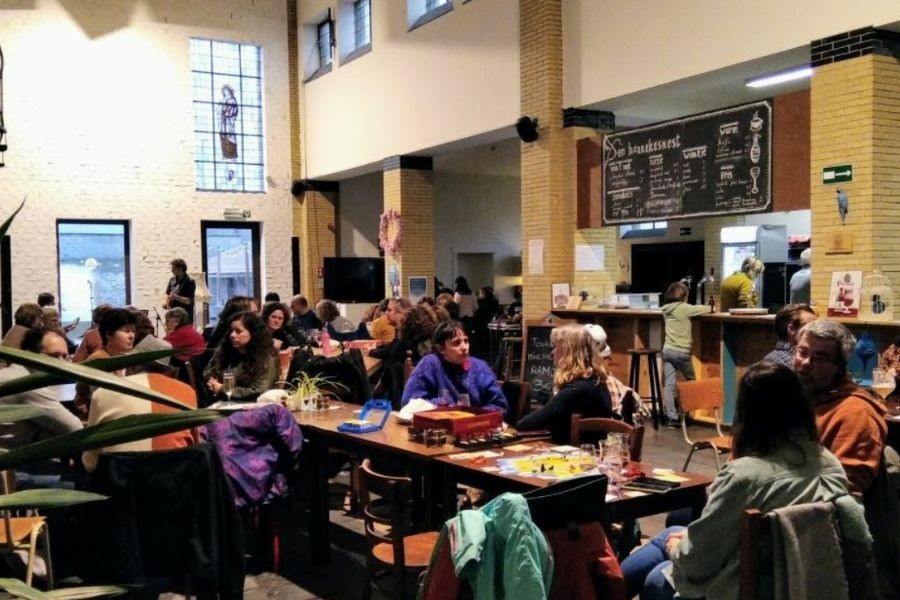 The previous parish church in Langerbrugge, in the Ghent Canal Zone, has become a meeting place for neighbours.
The previous parish church in Langerbrugge, in the Ghent Canal Zone, has become a meeting place for neighbours.© Voluit vzw
Citizens' initiatives
In Flanders, local people are represented in the public institutions that manage church buildings. In the Netherlands, no formal role has yet been established for members of the community in decisions surrounding closure or repurposing. Nevertheless, there are many initiatives in which citizens, often local stakeholders, have ensured the preservation and repurposing of vacant church buildings. The public has been and will be the users of the future. By giving them a role, unexpected solutions often arise.
In Bemmel, Gelderland, the Stichting Kerk Bemmel (Foundation for the Church of Bemmel) was established by residents after the structure was withdrawn from religious services in 2015. They purchased the church for one euro and built the most sustainable theatre in Gelderland there. This did not happen by itself: many local people, companies and organisations have contributed, making the project a successful example of community initiative.
In Hooge Zwaluwe, a typical rural village in Brabant with all kinds of challenges in the areas of liveability and maintenance of facilities, the Sint-Willibrordus church, which closed in 2013, has been converted by two residents into a restaurant called Onze Kerk (Our Church), which has become a central meeting place in the village. The creativity and perseverance of the two entrepreneurs were decisive factors in the success of this initiative, but the decisiveness and vision of the parish council and the involvement and support of the villagers formed the basis of its success.
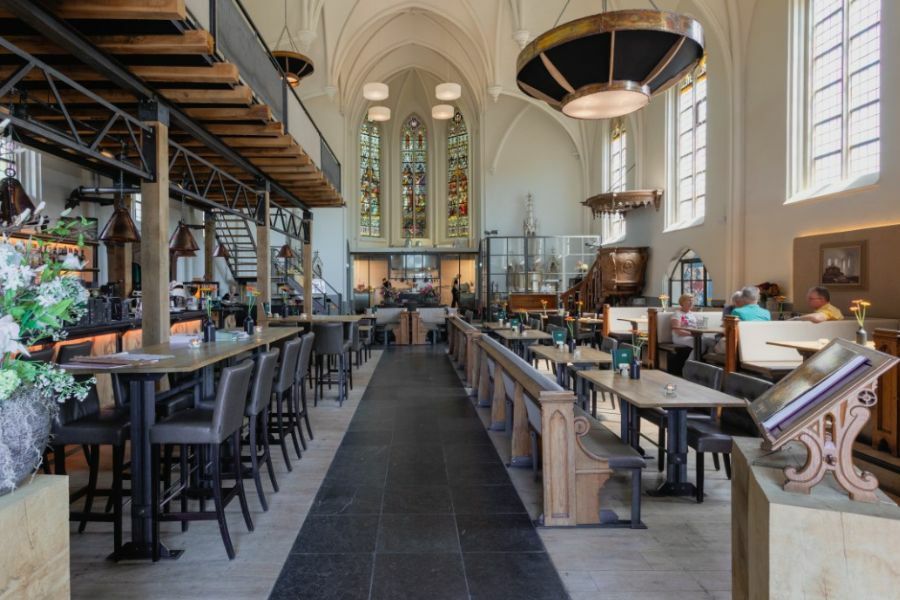 The church of Hooge Zwaluwe is turned into a restaurant.
The church of Hooge Zwaluwe is turned into a restaurant.© Nanette de Jong/RCE
While there is plenty of information available about the repurposing of religious heritage, it is mainly aimed at professionals involved in the field and not directly at the needs of the local community. Basic knowledge of how to start processes is often lacking at the local level, where it is most needed. In the Netherlands, the Heritage Association Heemschut, the largest national heritage association, has therefore compiled a brochure, book and eight video clips specifically aimed at citizens and heritage volunteers. The video clips and the brochure zoom in on practical examples and serve as a source of inspiration for anyone who wants to get involved. An online “religious heritage route guide for citizens and heritage volunteers” is currently in development.
Involving communities
Community involvement is critical when it comes to determining the future of retired church buildings. While heritage preservation is important, it’s equally essential to find solutions that resonate with people today and in the future. By involving local communities in the decision-making process, we can ensure that these historic buildings continue to serve a valuable role in society—whether as cultural centres, social spaces, or educational hubs—while preserving their heritage for future generations.


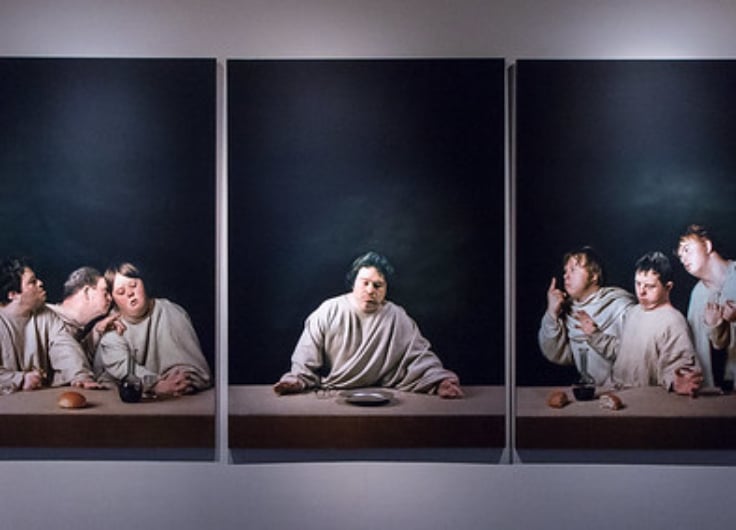





Leave a Reply
You must be logged in to post a comment.